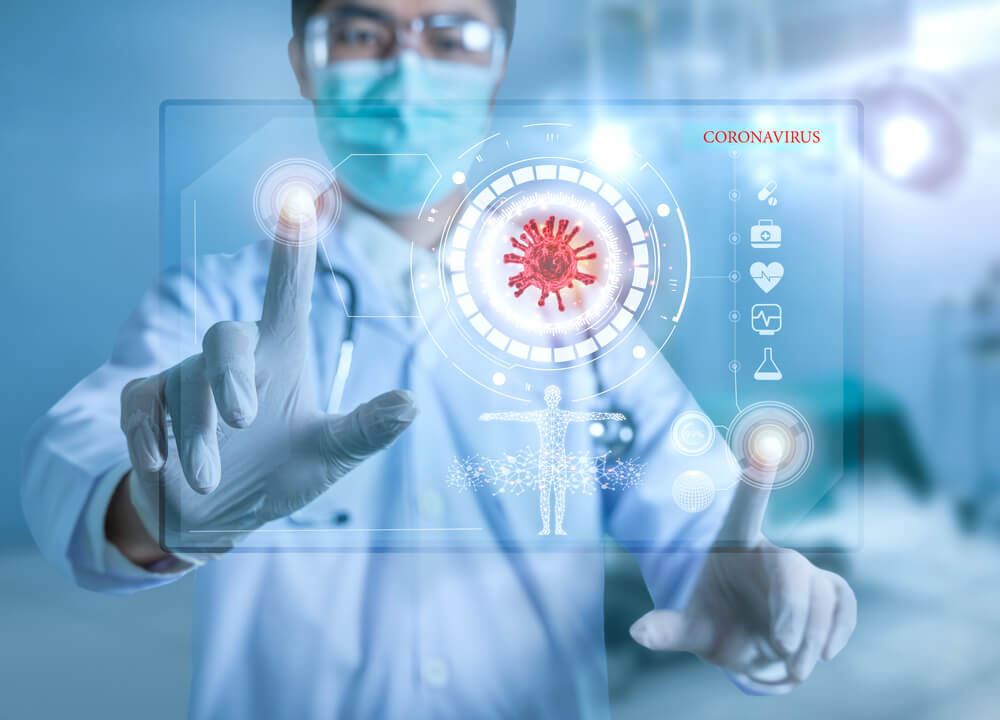



Get new exclusive access to healthcare business reports & breaking news




There was an interesting article in The Economist a few months ago. It argued that the best way to understand the long-term impact of COVID-19 should not be game-changing. Instead, it should be viewed as a catalyst for accelerating active trends in business that were in the early stages of development. It goes in detail about how data in everyday life is one of the most important factors behind the noted acceleration.
In terms of the healthcare industry, including the likes of MedTech, life science, and wellness, they share the same general consensus.
The rate of transformation within the healthcare industry will continue to grow rapidly over the coming years, and for potentially decades. It’s going to have an effect on all sectors, from how companies deliver their healthcare services to the population paying for it.
Orthogonal recently tackled this subject in depth. Here’s a look at some of their findings.
The general advice put out there by governments to prevent the transmission of COVID-19 has been to avoid normal interactions. However, this has been the bedrock of the health system, leading to a reduction in the number of practices performed, including surgery.
During the crisis, such services have been put on hold until the risk of not having the surgery becomes a greater risk to the patient’s health than contracting the coronavirus. This goes for therapy administration and even seeking an appointment at the doctor’s office.
For example, according to the American Hospital Association, those hospitals that were not owned by the federal government were expected to lose more than $160 billion in revenue between March and June earlier this year.
This has also affected businesses that provide medical devices and pharma companies whose purpose is to serve such services. For example, when heart transplants are down and the drugs used in such surgeries are not being administered by the physicians, they just sit in storage warehouses and collect dust.
Further, the next generation of medical drugs and devices are being delayed because there are no clinical trials being conducted. Since people cannot turn up to their doctor and register for a trial, they either can’t continue or take place altogether.
The full extent of the delay is not known, but the overall delays are being compounded by the fact that the FDA is allocating resources to deal with overseeing COVID-19 issues.
Hospitals may not be spending a lot of money on surgeries, but they are funding things that can tackle COVID-19 and related issues. The biggest areas of growth have been in telehealth and other remote procedures.
The biggest challenge with telehealth has been to get people to use it. This goes for both patients and healthcare providers. And then there’s the challenge where users must have a positive experience using telehealth so they continue to use it in the future.
Of course, this brings up another obstacle: scale.
Patients and providers want to receive and provide healthcare services, respectively, without the risk of transmitting the coronavirus. One instance shows that insurance claims for telehealth increased 4,347% nationally when comparing March 2019 and March 2020.
The state and healthcare regulators are doing their part to accelerate telehealth. But as with all big changes, there comes positive and negative consequences.
On one hand, telehealth can provide just as much care and advice for patients as in-person visits without placing a burden on them. It also allows doctors, nurses, and other healthcare practitioners to focus on the most critical cases.
On the other hand, telehealth brings unintended consequences to the table that must be accepted or mitigated to some extent. For example, fewer patients are canceling their appointments. On the face of it, this doesn’t seem like a big deal, but usually, healthcare professionals would use that time to catch up on their notes or deal with other administrative issues like ordering prescriptions. It also means that professionals are spending a lot more time at work to deal with the increased demand for treatment.
Telehealth provides a new option to facilitate interactions between patients and their healthcare professionals. However, there is still a limit to what it can do, such as a lack of video or phone calling to replicate the hands-on service.
The Centers for Medicare and Medicaid Services (CMS) has begun reimbursing for certain services carried out at the patient’s home over the past few years. As such, providers have been trying out more remote treatment options, from monitoring patients to diagnostics.
COVID-19 has only seen the demand for such services increase. Regulators are also being more flexible in the way they allow remote health monitoring with the assistance of digital health devices.
Orthogonal references a quote given by the medical of MedStar, Ethan Booker, MD. He said COVID-19 is providing “the opportunity to move from a highly scheduled and (episodic) experience to a much more relational experience for both patients and providers…. remote patient monitoring services provide a continuous, data-rich platform that connects providers to patients at any time, rather than just when the patient comes to the provider…
“Having learned how to manage patients with COVID-19, providers can now pivot to manage patients with chronic care needs, or those who’ve just been released from the hospital, or those who frequently visit the hospital, in their homes.”
Crunchbase highlighted how COVID-19 has impacted clinical trials in a recent article. It covers how patient recruitment, ongoing monitoring, and long-term opportunities have all been affected:
“COVID-19…threw a wrench in the traditional method of clinical trials, in which participants usually travel to a clinical site for an in-person evaluation. This is causing principal investigators and research staff to find other ways to keep participants connected with studies…
Even before the pandemic, some in the clinical trials sector was pushing for the addition of virtual components, such as wearables for data collection throughout the day. Others sought the adoption of decentralized clinical trials, those executed through telemedicine and mobile or local health care providers.”




Necessary cookies are absolutely essential for the website to function properly. This category only includes cookies that ensures basic functionalities and security features of the website. These cookies do not store any personal information.
Any cookies that may not be particularly necessary for the website to function and is used specifically to collect user personal data via analytics, ads, other embedded contents are termed as non-necessary cookies. It is mandatory to procure user consent prior to running these cookies on your website.


Join 50,000 healthcare professionals and get our weekly newsletter delivered to your inbox. Breaking industry news, startup innovation alerts & emerging HealthTech News. Be in the know!
Your work email here


